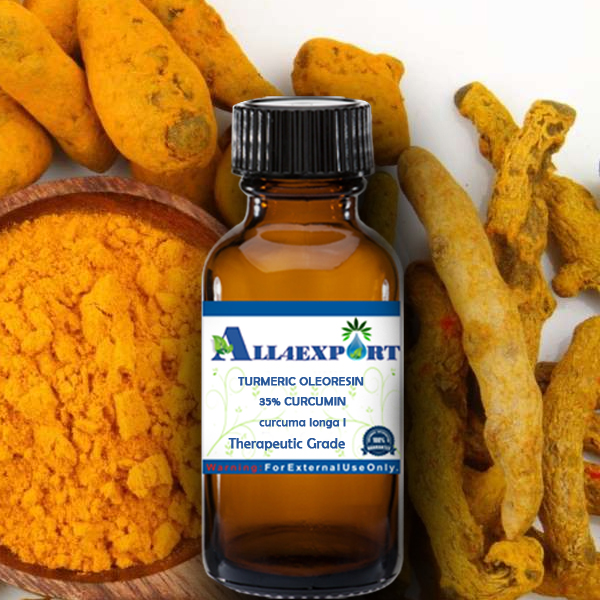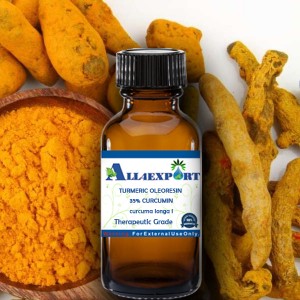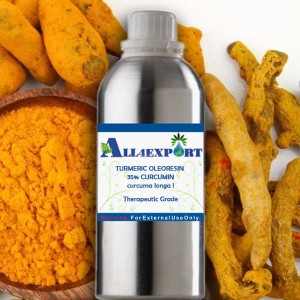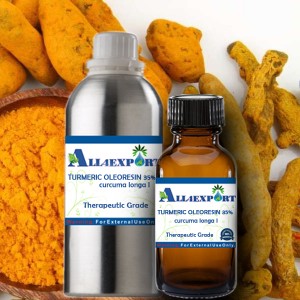| TURMERIC OLEORESIN 35% CURCUMIN |
Botanical Name | : | curcuma longa l | Country of Origin | : | India and Pakistan | Solubility | : | Soluble in oil, insoluble in water | Specific Gravity | : | Not Applicable | Optical Rotation | : | Not Applicable | Refrective Index | : | Not Applicable | Plant Part | : | Rhizomes of the plant | Bland With | : | Blends well with other spice oils including Cinnamon Bark, Nutmeg, Citronella, Grapefruit, Lemon, Orange, Peppermint, Rosemary, and Rose. | CAS No | : | 129828-29-1 | Flash Point | : | 170.00 ° F | Extraction Method | : | Solvent Extraction |
|
Description : Turmeric Oleoresins are obtained by extracting ginger and dried rootstock of turmeric. The chief component of this oleoresin is curcumin, Tumerone, zingiberene are the other constituents of volatile oil. Turmeric oleoresin is reported to possess many pharmacological and anti inflammatory actions.
|
Constituents : Curcuminoids: 55% Volatile oil content: 35% |
Uses : Turmeric oleoresin may be widely used as coloring and flavoring agents for fast foods, jams, canned foods, etc. It can be used as a disinfectant for minor scrapes, cuts and burns. As a potent anti-inflammatory.
|
Benefit : Turmeric oleoresin helps to reduce inflammation and also the antioxidant properties help to accelerate healing and decrease the formation of scars. |
Caution Note: Oleoresin is a powerful irritant, and even in minute quantities produces an intense burning sensation when it comes in contact with the eyes and tender parts of the skin.
All of the information and opinions that are provided on this web site are for informational and educational purposes only. This information is not intended to replace medical advice given by a medical practitioner. Anyone considering alternative therapies should consult with their medical professional before using an alternative method of healing. We do not give nor is any opinion on our web site medical advice.
|



